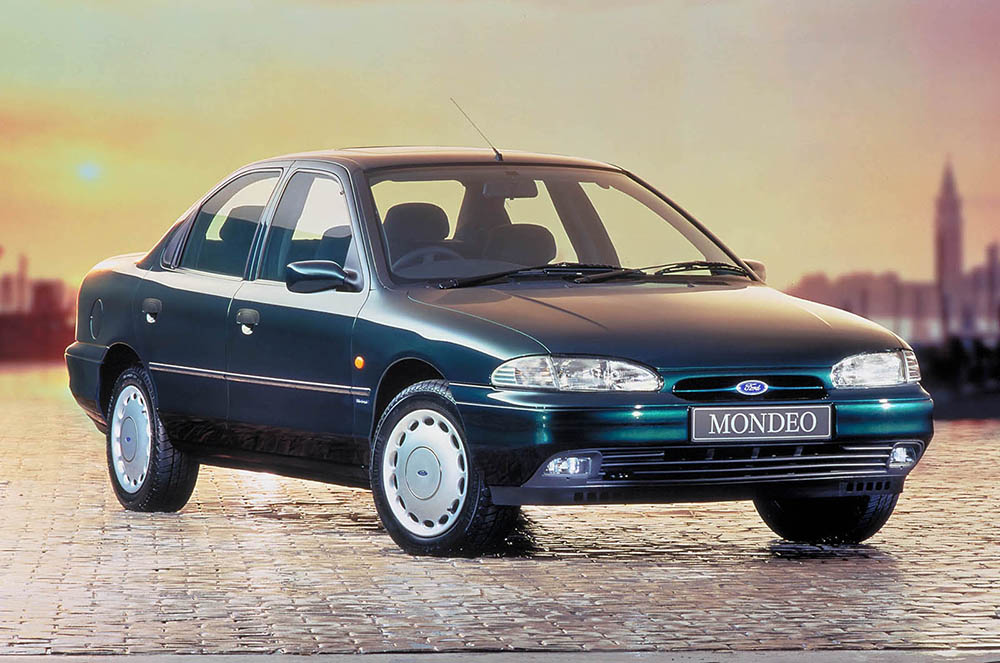Ford’s Mondeo turns 30
What comes to mind when you think of the Ford Mondeo? For decades, one of Britain’s most popular mid-size saloons has often been regarded as automotive wallpaper – a car that, despite its qualities, was so ubiquitous that it could rarely be viewed as exciting. Not often does a Mondeo grace a classic enthusiast’s website, although that may be about to change.
This year marks 30 years since the Ford Mondeo launched in Britain. It’s a milestone some will look upon in disbelief, not least anyone still mourning the loss of the Sierra and Cortina, but one that’s worthy of recognition.
Mondeo sales began on 22nd March 1993, coincidentally the same day as Intel Corp. introduced the Pentium processor. In the same way Intel’s new hardware would be a giant leap for computers, the Mondeo would go on to transform the mid-size saloon sector – showing rivals that humble, everyday transport should still be capable of putting a smile on your face. Some might say that it revolutionised the repmobile.

Credit - Ford Motor Company
Work on the Mondeo design project began in 1986, headed up by the late John Oldfield – at the time, a 28-year Ford Motor Company veteran who would later become the Executive Chairman of Aston Martin. Oldfield’s team used the Dunton Technical Centre as the hub of operations, but production would require a departure from Dagenham to Ford’s existing facility in Genk, Belgium, where the company had been building Sierras for the last two years.
The Mondeo was a complete departure from its ageing predecessor - a car that was beginning to receive a kicking from rivals by the early ‘90s. The all-new Nissan Primera was stealing Sierra sales, while the Honda Accord, Peugeot 405 and Vauxhall Cavalier often stole its thunder in magazine group tests. Ford was also under mounting pressure from the team at Renault, who’d already began working on the hugely anticipated new Laguna in 1987 and were well on their way.
To give its new car a fighting chance, Ford tore up the traditional Sierra formula. Aside from a completely new design, the Sierra’s trusty CVH engine was tossed aside in favour of the purpose-built Zetec unit, mounted transversely to allow for front-wheel drive configuration. Available in 1.6, 1.8 and 2.0-litre specification, the Zetec was a revelation – especially compared to the much maligned, uncivilised CVH – completing the Mondeo range alongside diesel and V6 options.

Credit - Ford Motor Company
Improved crash safety was high on the agenda, with the Mondeo debuting technology we take for granted today. It was the first ever car introduced with a driver’s airbag as standard, and side-impact bars and seat belt pretensioners were also included to boost credentials further.
Despite Ford’s efforts to make the Mondeo as safe as possible, it was just as important that it was fun to drive. The late Richard Parry-Jones deserves much of the credit for its superb handling characteristics, engaging steering and a balance of noise, vibration and harshness that rivals could only dream of. The motoring press were astonished with just how well it drove – What Car? announced the Mondeo as both ‘Car of the Year’ and ‘Best Family Car’ of 1993, and it went on to win the European Car of the Year title a few months later.
As the first examples of Ford’s new car left the showrooms, Ford was keen to elevate the Mondeo’s image further. Practicing the company’s traditional ‘win on Sunday, sell on Monday’ approach, touring car legends Paul Radisch and Andy Rouse were recruited to campaign a pair of Mondeo Si works cars in the British Touring Car Championship. Team Mondeo entered mid-season, just in time for Round 8 at Pembrey. Though he missed the first half of the season, Radisch would go on to take third place in the overall BTCC of 1993.

Credit - Wikicommons
The Mondeo – in saloon, hatchback and estate form – was a sales smash hit. It became the second best-selling car in the UK by 1994, behind the Ford Escort, with over 120,000 registered in the first full year of production. Keen to stay one step ahead of rivals, Ford introduced a facelifted ‘Mk2’ model after just three years, significantly updating the Mondeo’s styling for 1996.
At the same rapid rate the Genk factory was churning out Mondeos in the early ‘90s, the supply of clean ones has been declining at an alarming rate over the last few years. The Mk1 Mondeo languished in the secondhand car doldrums for years, with many examples treated as cheap, disposable white goods undeserving of care and attention. Many have also been used on the banger racing circuit – being thrashed, crashed and eventually crushed by the scrapman.
With the earliest cars now three decades old, survivors have begun to follow the upwards trajectory of the good old Sierra. Even the finest examples are still hugely affordable, but it’s unlikely to stay that way forever. If you’re in the market for a spacious, usable modern classic that won’t break the bank, it might be time to join team Mondeo.
Does the original Ford Mondeo deserve to be saved as a modern classic? Let us know what you think.

COMMENT